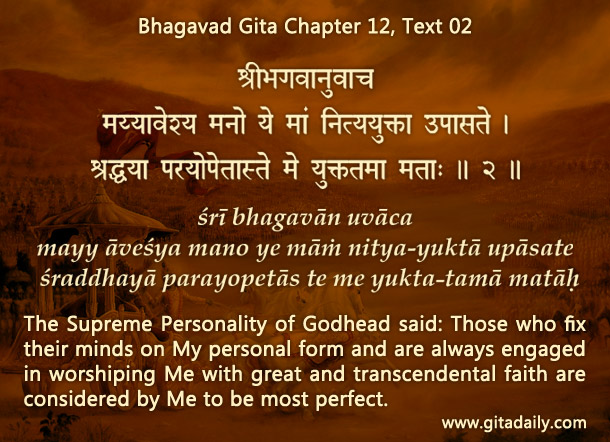When two people share many common interests and deep mutual understanding, they often say, “We are close to each other.” This closeness is not physical – they are not one being. It is emotional – their hearts are joined together.
A similar sense applies to spiritual closeness. Some spiritualists feel that merging brings us closest to the Absolute Truth. But in impersonal merging, all that exists is just non-differentiated consciousness – there’s no one who is conscious and no thing of which one is conscious. So, who is there to relish closeness to anyone else?
We all long to love and be loved. Bhakti-yoga offers us the supreme object for reposing our loving tendency perennially and blissfully. That object is Krishna, the all-attractive personal Absolute Truth. Devotional love for Krishna comprises the zenith of closeness – thus declares the Bhagavad-gita.
In the Gita (12.01), Arjuna asks: Who are most evolved in yoga – the devotees who worship Krishna or the impersonalists who seek the impersonal Absolute? In the next verse (12.02), Krishna answers that the devotees are the most evolved. He uses the superlative: yukta-tamo. Yukta is a variant of the word yoga – yukta refers to those engaged in yoga. Yukta-tara is the comparative form, like the English better. And yukta-tamo is the superlative form, like the English best. Thus, the Gita (12.02) declares that the most evolved yogis are the devotees.
Seen from another perspective, we are the eternal parts of Krishna (15.07). As the parts are meant to be connected with the whole, so too are we meant to be lovingly harmonized with the whole. The purpose of yoga is to remove all distractions from our reciprocating love with Krishna. When undistracted, the two spiritual lovers – the soul and Krishna – become one in love, absorbed in each other.
Such closeness unites far more intimately than does oneness.
To know more about this verse, please click on the image
Explanation of article:
Podcast:
Download by “right-click and save”


Hare krishna.
Very nicely explained.
Listening little bit of gita regularly is slowly and steadily purifying our thought process.